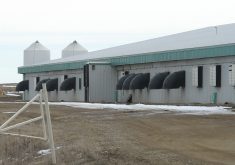Conditions are ripe for Canadian canola to make a triumphant return into Europe in 2010-11 but that appears highly unlikely, according to several analysts.
European Union rapeseed production is set to fall seven percent to 20 million tonnes, down from 21.45 million tonnes in 2009-10, according to the United States Department of Agriculture.
Oil World’s forecast is even lower, about 19.8 million tonnes, a drop of 1.7 million tonnes.
Analysts project strong rapeseed demand from Europe’s food sector and its biodiesel industry, which increased production by 17 percent in 2009 and is gearing up to meet the EU’s binding target of 10 percent renewable fuel use in the transportation industry by 2020.
Read Also

Phosphate prices to remain high
Phosphate prices are expected to remain elevated, according to Mosaic’s president.
Oil World predicts the EU will be the world’s largest rapeseed importer in 2010-11 and that European buyers will be willing to pay price premiums to get the required supplies.
The firm forecasts Europe’s rapeseed imports will rise to 2.19 million tonnes from 2.13 million in 2009-10. It expects that demand to be filled by former Soviet Union countries and Australia.
The USDA forecasts Ukraine will grow 1.6 million tonnes, down from 1.9 million last year.
The Australian Oilseeds Federation forecasts 2.28 million tonnes of production in Australia, up 20 percent from last year’s 1.9 million.
Growers expecting Canada to be in the mix of European suppliers will likely be disappointed.
In March 2009, the European Commission approved the final genetically modified canola trait submitted by Canada, paving the way for resumption of trade with a market that once purchased as much as 1.1 million tonnes of Canadian canola annually.
But a speed bump appeared when it was discovered that there is one unapproved trait that could disrupt trade to a region that has zero tolerance for unapproved events.
The trait is Westar-Oxy-235, a bromoxynil tolerant canola developed by Rhone-Poulenc Canada Inc. and commercialized for a couple of years in the early 2000s. The trait was found in the old Navigator lines of canola.
Canola Council of Canada president JoAnne Buth said although varieties containing the trait haven’t been sold for years, the likelihood that trace amounts are still in the handling system may prevent Canadian exporters from meeting Europe’s needs.
“It is going to be a limiting factor because not every exporter will be prepared to take the risk,” said Buth.
“You can have nine seeds in a B-train and you can get a detection.”
Canada is not seeking European approval of the Oxy-235 trait but wants to rid the handling system of trace amounts of the Navigator varieties.
There are reports that Europe may soon allow 0.1 to 0.3 percent of a shipment to contain an unapproved GM trait, up from 0.01 percent. Buth said that policy wouldn’t apply to traits like Oxy-235, which is not in the approval process.
Mark Ash, oilseed specialist with the USDA’s economic research service, is another analyst who doesn’t foresee much Canadian canola moving to Europe.
“Next spring, there might be some potential for trade between Canada and Europe but probably not until then,” he said.
Ash expects Europe to use its domestic rapeseed production for the biodiesel sector and to import soybean and palm oil to help fill its food demand.
He believes Canada will continue servicing Asian markets with what is expected to be a reduced supply of Canadian canola.
China harvested an estimated 12.8 million tonnes of rapeseed, down seven percent from 2009-10.
Ash said it is possible that given China’s rapeseed shortfall, the country will ease up on its blackleg import restrictions by adding some crushing facilities to the list of acceptable destinations for Canadian canola.















